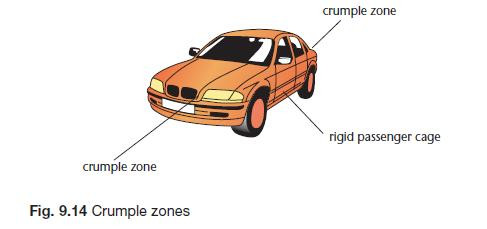Momentum and collisions
Momentum
Ten-pin bowling balls are available with different mass. A fast moving ball with low mass can be as effective as a slow ball with high mass. This is because it is the momentum of the ball that is important in the collision with the pins, and momentum depends on mass and velocity.

When a force acts on an object that is moving, or able to move, it causes a change in momentum in the same direction as the force (because the velocity changes). The longer time that the force acts, the bigger the change in momentum.

When two objects collide or explode apart, there is an equal and opposite force on each object, and they interact – push against each other – for the same time. This means that the change in the momentum of the objects is equal and opposite. Another way to say this is that the total momentum of the two objects before the collision or explosion is the same as the total momentum after the collision.


Taking the right direction to be positive:
Before the collision momentum =
4 kg × 15 m/s + 2 kg × (–3)m/s = (60 – 6) kg m/s
After the collision, momentum = 6 kg × v
So, because of conservation of momentum, v = 9 m/s
Safer collisions
When your body is in a collision, a force brings it to a sudden stop. The larger the stopping force on the body, the more it is damaged. To reduce damage we must reduce the force. This means:
- reducing the acceleration (force = mass × acceleration) which means reducing the velocity of the body more slowly.
This the same as:
- reducing the momentum of the body more slowly.

If the collision takes place over a longer time, say 0.5 s instead of 0.05 s – ten times as long – then the stopping force will only be one tenth of the size. The time of a collision can be increased by using:
- Crumple zones The car occupants are in a strong safety cage. The front and back of the car are designed to crumple in a collision, increasing the distance and time over which the occupants are brought to a stop.

- Airbags The body hits the airbag, which is compressed, increasing the distance the body moves and the time it takes to stop.
- Seatbelts These are designed to stretch slightly so that the body moves forward and comes to a stop more slowly than it would if it hit the windscreen or front seats. After a collision, the seatbelts should be replaced because having stretched once, they may not work properly again.
- Cycle and motorcycle helmets These contain a layer of material which will compress on impact so that the skull is brought to a stop more slowly. They should be replaced after a collision as the material will be damaged andmay not give good protection again.
